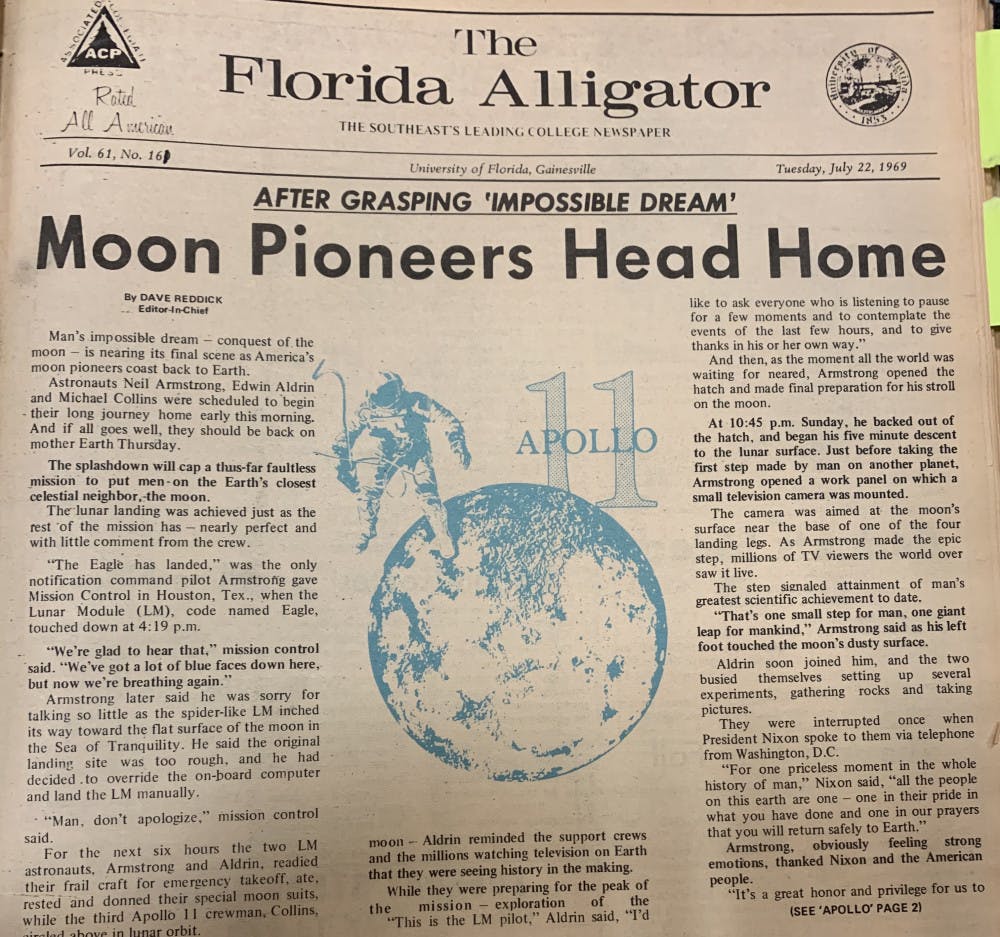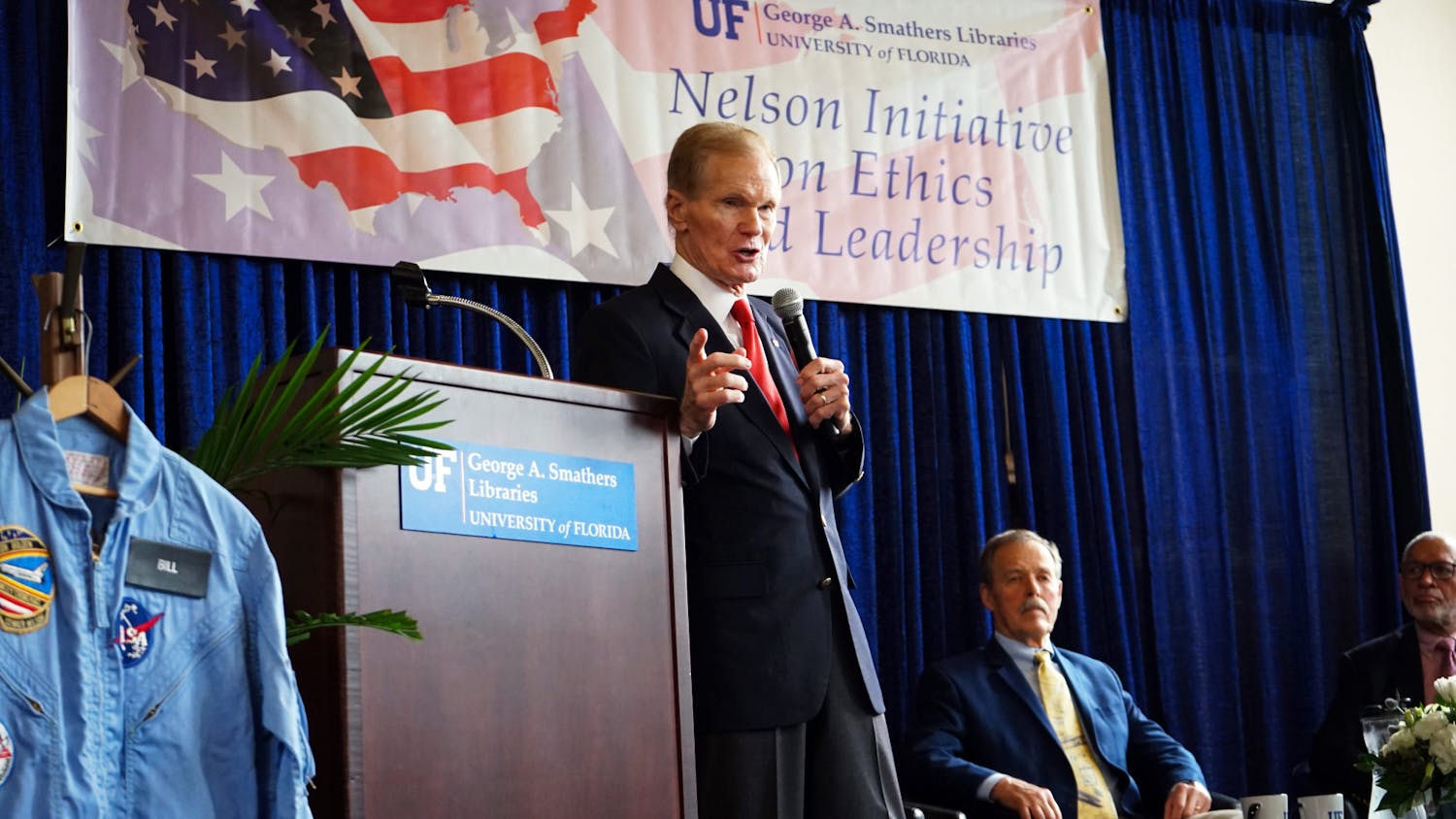Man’s impossible dream — conquest of the moon — is nearing its final scene as America’s moon pioneers coast back to Earth.
Astronauts Neil Armstrong, Edwin Aldrin and Michael Collins were scheduled to begin their long journey home early this morning. And if all goes well, they should be back on mother Earth Thursday.
The splashdown will cap a thus-far faultless mission to put men on the Earth’s closest celestial neighbor, the moon.
The lunar landing was achieved just as the rest of the mission has — nearly perfect and with little comment from the crew.
“The Eagle has landed,” was the only notification command pilot Armstrong gave Mission Control in Houston, Tex., when the Lunar Module (LM), code named Eagle, touched down at 4:19 p.m.
“We’re glad to hear that,” mission control said. “We’ve got a lot of blue faces down here, but now we’re breathing again.”
Armstrong later said he was sorry for talking so little as the spider-like LM inched its way toward the flat surface of the moon in the Sea of Tranquility. He said the original landing site was too rough, and he had decided to override the on-board computer and land the LM manually.
“Man, don’t apologize,” mission control said.
For the next six hours the two LM astronauts, Armstrong and Aldrin, readied their frail craft for emergency takeoff, ate, rested and donned their special moon suits, while the third Apollo 11 crewman, Collins, circled above in lunar orbit.
While they were preparing for the peak of the mission — exploration of the moon — Aldrin reminded the support crews and the millions watching television on Earth that they were seeing history in the making.
“This is the LM pilot,” Aldrin said, “I’d like to ask everyone who is listening to pause for a few moments and to contemplate the events of the last few hours, and to give thanks in his or her own way.”
And then, as the moment all the world was waiting for neared, Armstrong opened the hatch and made final preparation for his stroll on the moon.
At 10:45 p.m. Sunday, he backed out of the hatch, and began his five minute descent to the lunar surface. Just before taking the first step made by man on another planet, Armstrong opened a work panel on which a small television camera was mounted.
The camera was aimed at the moon’s surface near the base of one of the four landing legs. As Armstrong made the epic step, millions of TV viewers the world over saw it live.
The step signaled attainment of man’s greatest scientific achievement to date.
“That’s one small step for man, one giant leap for mankind,” Armstrong said as his left foot touched the moon’s dusty surface.
Aldrin soon joined him, and the two busied themselves setting up several experiments, gathering rocks and taking pictures.
They were interrupted once when President Nixon spoke to them via telephone from Washington, D.C.
“For one priceless moment in the whole history,” Nixon said, “all the people on this earth are one — one in their pride in what you have done and one in your prayers that you will return safely to Earth.”
Armstrong, obviously feeling strong emotions, thanked Nixon and the American people.
“It’s a great honor and privilege for us to be here, representing not only the United States but men of peaceable nations — men with interest and curiosity of man’s vision for the future,” Armstrong said.
The men then resumed their activities, gathering samples of the lunar soil and taking various measurements.
Then, about two hours after they first opened the hatch, the two climbed up the ladder, with Aldrin in the lead, and began removing their bulky back packs and outer suits.
After dumping much of their equipment out, they began a long rest period to separating the upper portion of the LM from the landing section and blasting back into lunar orbit for rendezvous with Collins in the command module “Columbia.”
After chasing Columbia for more than two orbits of the moon, Eagle finally docked and Armstrong and Aldrin crawled back into Columbia.
The upper part of Eagle was discarded into space Monday night.
Columbia’s main engine was scheduled to blast the three out of lunar orbit early this morning.
Editors' note: This story ran on Juyl 22, 1969 in the print edition.






